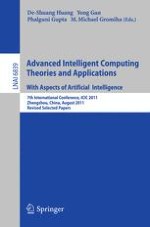This book constitutes the thoroughly refereed post-conference proceedings of the 7th International Conference on Intelligent Computing, ICIC 2011, held in Zhengzhou, China, in August 2011. The 94 revised full papers presented were carefully reviewed and selected from 832 submissions. The papers are organized in topical sections on intelligent computing in scheduling; local feature descriptors for image processing and recognition; combinatorial and numerical optimization; machine learning theory and methods; intelligent control and automation; knowledge representation/reasoning and expert systems; intelligent computing in pattern recognition; intelligent computing in image processing; intelligent computing in computer vision; biometrics with applications to individual security/forensic sciences; modeling, theory, and applications of positive systems; sparse manifold learning methods and applications; advances in intelligent information processing.
